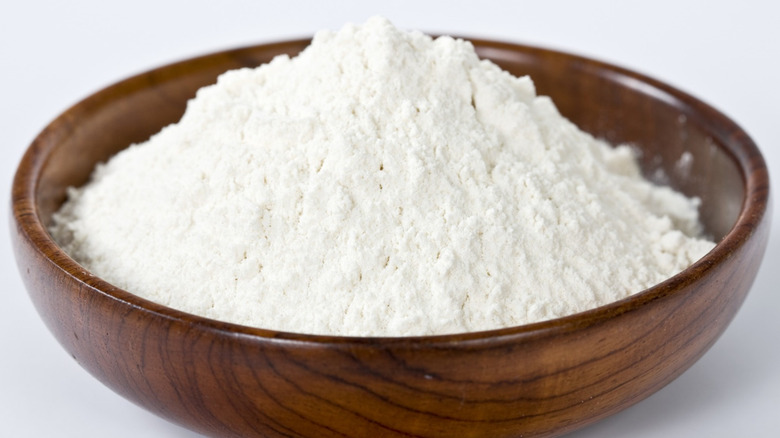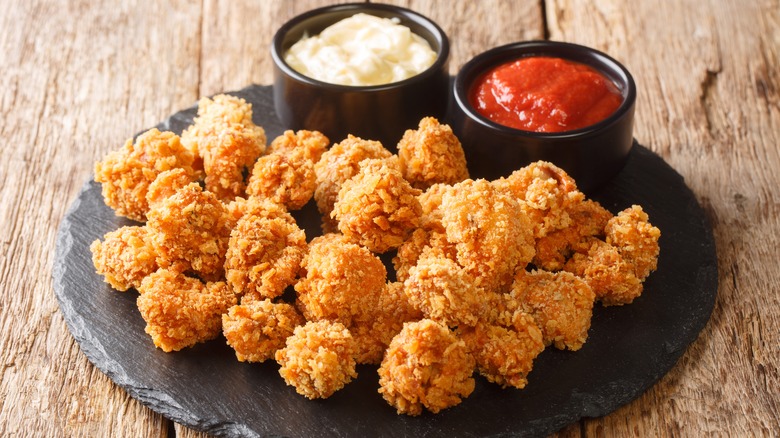The Biggest Difference Between Wondra And Regular Flour
Flour, one of the essential ingredients in cooking and baking, is used in a wide range of recipes, including cakes, bread, pastries, and sauces. We're all familiar with regular flour, but what is Wondra flour? The main difference between these two types is how they are produced and their intended use.
Regular flour, or all-purpose flour, is made from a blend of high-protein hard wheat and low-protein soft wheat, making it a versatile ingredient for many recipes. It can also be used as a thickening agent in sauces and gravies, though it has a tendency to form lumps. Regular flour has a fine texture, but Wondra is even finer.
Wondra was introduced in 1963 by the Gold Medal Flour Company, a subsidiary of General Mills. It's made by combining a blend of wheat flour and malted barley flour, partially hydrating the flour by steaming and then drying it, a process known as pregelatinization, then milling it into even finer particles. The main difference between this and the all-purpose version is that Wondra flour is pre-cooked and dried, a process that causes it to lose some of its gluten, resulting in a fine, powdery texture. Its versatility and ease of use made it a convenient option for lump-free sauces and gravies. And because it's pre-cooked, you can avoid the unpleasant flavor of raw flour. Over time, Wondra has become a staple ingredient in many kitchens, and its distinctive yellow and blue packaging is easily recognizable on store shelves.
Things Wondra can and can't be used for
Even though Wondra offers some advantages in cooking, it may not be the best option for baked goods due to its reduced gluten content, which, along with its pre-cooked nature, means that it doesn't have the necessary elasticity for all recipes. While versatile, it is not a direct substitute for the regular all-purpose version because it may not yield the same results in all baked goods. It is specifically formulated for quick-dissolving and instant-thickening, so it may not work well in recipes that rely on the gluten structure provided by regular flour. Due to its delicate powderiness and instant-dissolving properties, it might not produce the desired texture.
However, a couple of things that Wondra is perfect for are breading or battering; this flour is commonly used in recipes such as fried chicken or fish. Its fine texture helps the coating adhere better to the food, producing a crispier and more even coating. It also works for some baking recipes that require quick absorption of liquid, such as crepes, quick bread, or angel food cake.

